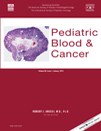The use of palliative chemotherapy in pediatric oncology patients: A national survey of pediatric oncologists†‡
All authors participated in the design of the study and interpretation of the data; performed data analysis; Tammy Kang and Kari Hexem drafted sections of the manuscript; all authors revised the manuscript for key intellectual content. All authors read and approved the final manuscript. Tammy Kang had full access to all the data in the study and takes responsibility for the integrity of the data and the accuracy of the data analysis. Richard Aplenc completed the survey as a study subject.
Conflict of interest: Nothing to declare.
Abstract
Background
Many children continue receiving chemotherapy after there is no realistic hope for cure. One factor that influences parental decisions to pursue medical therapies is physician preference. To date, no studies have described pediatric oncologists' perspectives and practices regarding palliative chemotherapy (PC).
Procedure
We surveyed via email pediatric oncologists practicing in the U.S who are members of the Children's Oncology Group to achieve the following objectives: (1) Describe pediatric oncologists treatment considerations regarding the use of PC. (2) Assess treatment considerations that influenced pediatric oncologists' therapy recommendations for their most recent patient receiving PC. There were 422 participants (40.8%) who completed the survey.
Results
The most important factors considered by pediatric oncologists when prescribing PC were the toxicity of the chemotherapy (4.90 mean SD = 0.36 utilizing 5 point scale with 1 = not important to 5 = very important), the preferences of the family (4.57; SD = 0.60), and the potential to decrease symptoms arising from tumor burden (4.42; SD = 0.65). These treatment considerations were not as important when PC was prescribed for their most recent patient. Similarly, the chief aims in prescribing PC were not achieved for recent patients receiving PC. For their most recent patient who received PC, 40.8% believe this treatment was primarily for parental wishes.
Conclusion
According to 80.2% of pediatric oncologists completing the survey, some patients receive chemotherapy beyond medical benefit and 40.8% of these oncologists have prescribed PC for the purpose of parental wishes to a recent patient. The chief aims in prescribing palliative chemotherapy were not achieved for recent patients. Pediatr Blood Cancer 2013; 60: 88–94. © 2012 Wiley Periodicals, Inc.




